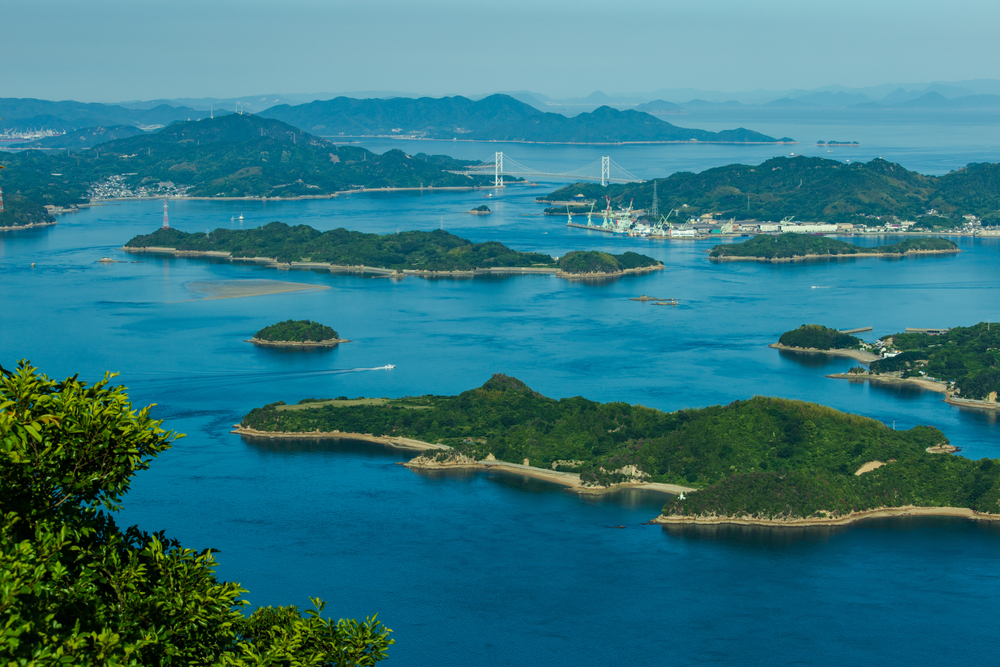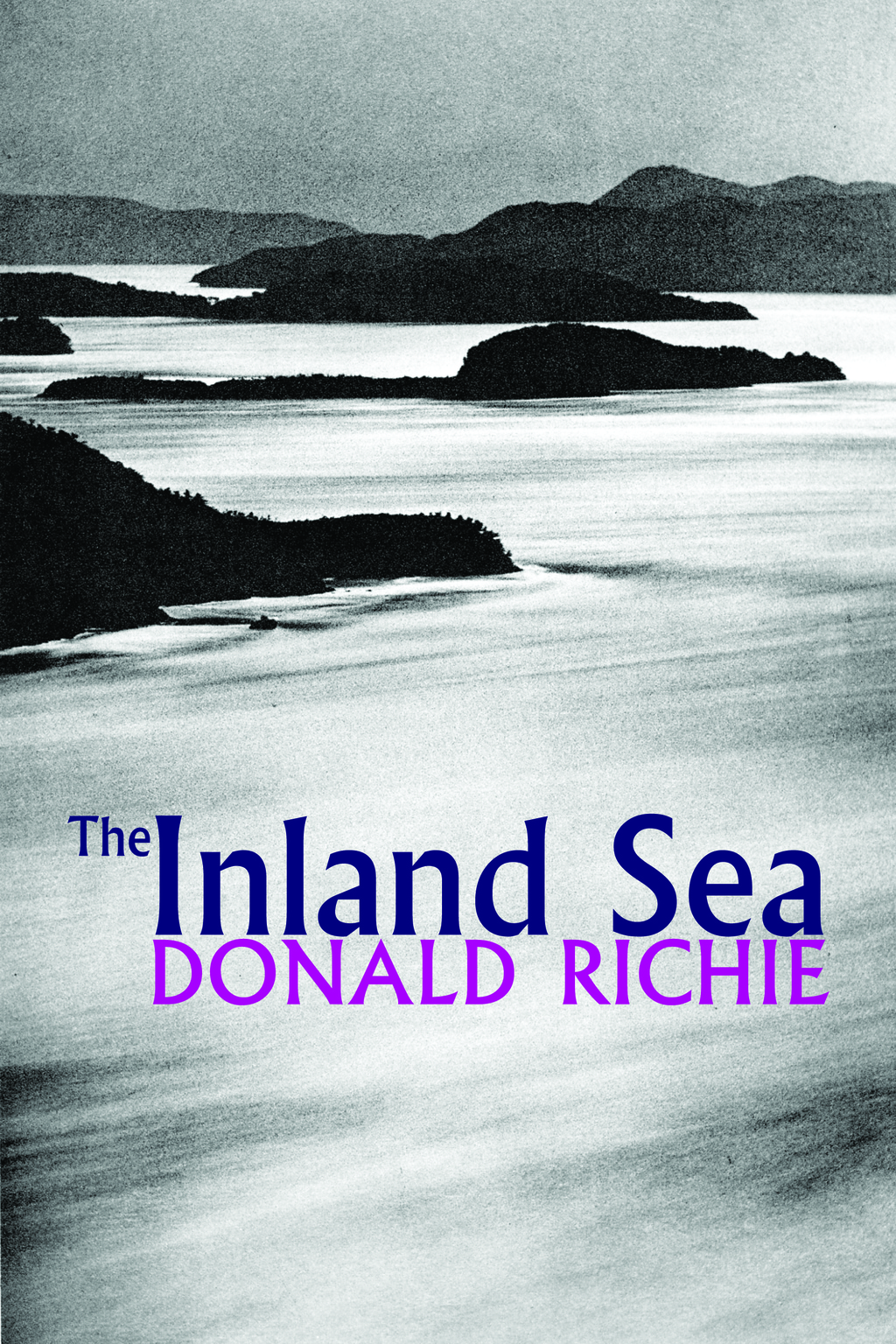There are few books with the power to lure me back time and time again. Few whose covers, once slammed shut with a sense of satisfaction and finality, whisper sweet nothings from the shelf, asking me to come back for just one more hit. The first time I read Donald Richie’s The Inland Sea, not long after I moved to Japan, I became acutely aware of a few sensations. Firstly, I knew was in possession of a special, arguably singular, piece of work. Secondly, every word I’d ever put on a page felt painfully inadequate, clichéd, trite. Lastly, I knew I’d read it again, and again, and again.
I knew I’d read it again, and again, and again.
First published 50 years ago in 1971, The Inland Sea is based on a series of journal entries that Donald Richie, a longtime Japanese resident, had compiled over several trips to the Seto Inland Sea in the 1960s. Boarding ferryboats, fishing trawlers, lulling trains, and sweat-soaked buses Richie traveled around the “lakelike body of water bounded by three of Japan’s four major islands” with a let-the-wind-guide-me mentality. This approach to travel – unburdened by bucket lists and checkboxes – took him from floating fishing villages stalled in time to port cities marred by the first signs of modernity and Western influence.

Richie was in search of the “old Japan”, a place where “people live better than anyone else because they live according to their own natures”; islands where “men rise with the sun and where streets are dark and silent by nine at night”. Though calling The Inland Sea a “travel book” feels wholly reductive, it has retained its place in the pantheon of Japanese travelogues partly because of the hopelessness of its cause; operating on the brief promise that we don’t know what happens next – that maybe this land remains untainted still, that maybe those bridges to the mainland were never built.
As the concrete tsunami was sweeping through a rapidly developing post-war Japan, Richie glimpsed the Seto Inland Sea at a time where “history” and “present” weren’t so differently defined. This romanticism was a driving force behind the journey. After all, “a journey is also something of a flight,” he tells us. It was an escape from his nightmarish present of smog-choked cities and coasts peppered with belching smokestacks to an unblemished, simple land ready to open its embrace.
“I want to observe what people were like when they had time and space,” Richie writes, “because this will be one of the final opportunities.”
Over the course of his journey, Richie meets an eclectic cast of characters representing both the primitive Japan of his quest and the industrial Japan looming over it like a deadly portent. Whether he’s striking up conversations with villagers who had theretofore never seen a white man, caressing the tattoo – “beautifully traced with blue and red” – of a Yakuza-turned-acolyte, strolling through Takamatsu’s Ritsurin Garden with a Jane Fonda-loving local teen, or meeting the long-lost lepers of Oshima, his trademark elegiac prose and insightful ruminations are always within arm’s reach. And then there’s the promiscuity.
Of all his flaws – which the book lays self-deprecatingly bare – Richie’s apparent desire to bed everything that moves – and some things that don’t – is the most recurring. Frankly, he’d likely be described as “a dirty old man” in today’s world, by even his more charitable critics. But the nature of these encounters is also revealing. Some show a man steeped in loneliness: “Though my logic failed to move her, she eventually succumbed to her own weariness. I do not know whether Momoko had ever felt less like the act of love; I certainly never had,” he writes of a desultory evening with a poetic prostitute in Onomichi. Some garner little more than mere suggestion: “He had walked me back to my inn, had come in for a cup of tea, had asked more questions, had finally spent the night.”
He just as readily fetishized the “childlike” Japanese physique, the locals’ skin – “smooth as some fabled Asiatic cloth” – and even seemed to lust after Japan herself: “Female mountains of unexampled loveliness, all loins and haunches, skirts of sand of purest white.” But none of these sexual encounters are penned with the cocksure bravado of a man scratching notches on his bedpost. They are an act in Richie’s grand process of sense-making, in his continued self-examination.

Book cover, courtesy of Stonebridge Press
There’s a fragmented quality in the writing too, mirroring the journey itself. The book flits between past- and present-tense prose with no prior warning. Richie’s musings at times burst forth as stream-of-consciousness ideas, as though being formulated in real time. Regarding Kosan-ji temple in Setoda, he thinks, “When kitsch becomes this grand, it becomes art… it transcends its own triviality through its size and intentions”.
Others seem like theories he’s pondered for years. In former pleasure town Kinoe, he writes, “Sordid is one thing a Japanese cannot be. He can be a number of unpleasant things, he can even be some unpleasant things that we cannot, but he is, I think, incapable of sordidness.”
Beyond the broad-stroke generalizations, the prescient forewarnings, the romanticizing and hedonism, Richie’s attempt at understanding the Japanese – “the last people who stand in reverence of the natural world” – is The Inland Sea’s most enduring tale. This is the true elegy of the book: the more he writes about the inhabitants of his adopted homeland, the more he unpacks himself.
The more he writes about the inhabitants of his adopted homeland, the more he unpacks himself.
One feels a striking resonance as Richie writes of the collective Japanese psyche, their propensity for feeling sadness, their philosophy of craftsmanship and appreciation of art, how their sense of puritanism differs from the West’s; of the qualities that make them seem so deeply human yet so utterly Japanese. The Japanese way of thinking is often mythologized. At the turn of the 20th century, one of Richie’s literary predecessors, Lafcadio Hearn, wrote of a Westerner trying to think like a Japanese, “One would need to be born again, and to have one’s mind completely reconstructed.” Few have dispelled this mythos better than Richie. And it’s not just what he tells us about Japan, but about ourselves as gaijin here. When asked if he liked living in Japan, Richie always had a simple answer at hand: “I like myself here.” Perhaps that’s why I keep coming back to this book: I like myself when I read it. And I’d wager I’m not the only one, or we wouldn’t still be talking about it 50 years on.
You can buy The Inland Sea book here.
Read more about the Seto Inland Sea area of Japan:
2019 Setouchi Triennale: Shedding Light on an Island with a Dark Past








